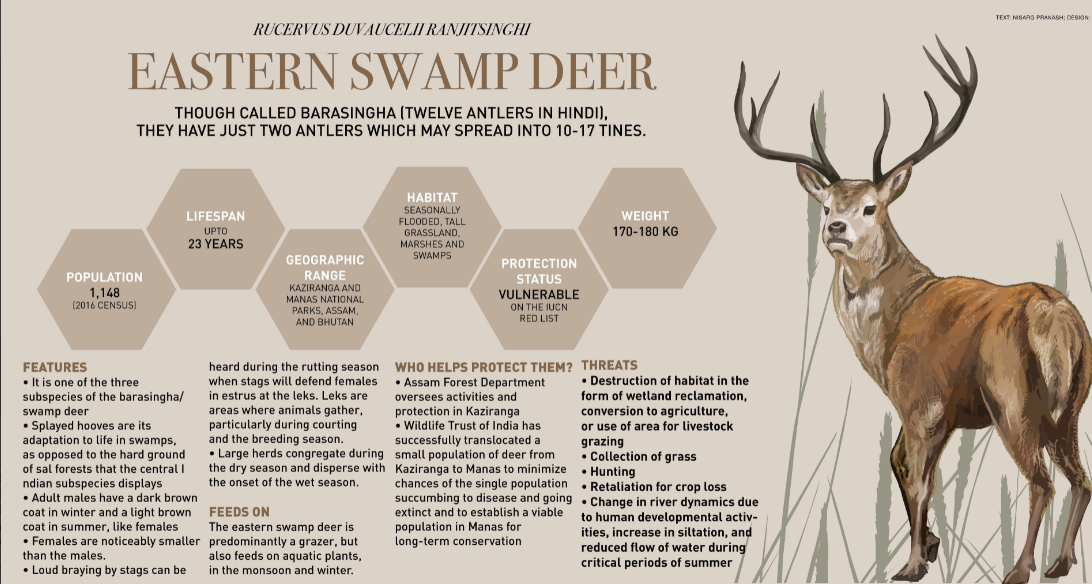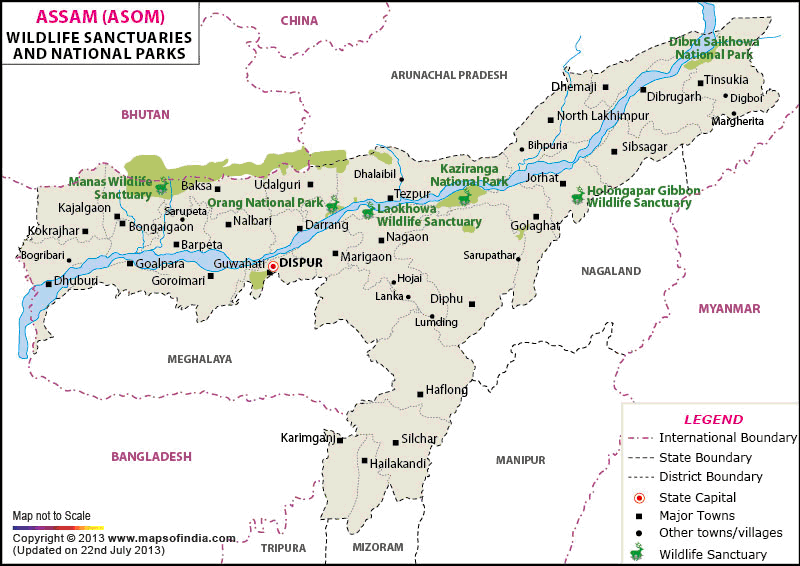Description

Copyright infringement is not intended
Context: The population of the vulnerable eastern swamp deer, extinct elsewhere in South Asia, has dipped in the Kaziranga National Park and Tiger Reserve.
Recent findings:
- During the Eastern Swamp Deer Estimation a decrease from 907 individuals in 2018 to 868 in 2019 and 2020 are found.
- Earlier eastern swamp deer was endemic to Kaziranga but now has moved to other areas such as Orang National Park and Laokhowa-Burachapori wildlife sanctuaries.
About Swamp Deer:
- The barasingha, also called swamp deer, is a deer species distributed in the Indian subcontinent.
- It differs from all other Indian deer species in that the antlers carry more than three tines.
- Threats: Poaching for antlers and meat, habitat loss.
- Barasingha is the state animal of the Indian states of Madhya Pradesh and Uttar Pradesh.
Three subspecies of swamp deer are:
- Western swamp deer is adapted to the flooded tall grassland habitat in the Indo-Gangetic plain and are found in the Sukla Phanta Wildlife Reserve of Nepal.
- Southern swamp deer has hard hooves and is adapted to hard ground in open sal forest with a grass understorey survives only in the Kanha National Park. It was reintroduced into Satpura Tiger Reserve.
- Eastern swamp deer is only found in Assam i.e. it is endemic to Assam.
Protection Status:
- It is listed as Vulnerable in the IUCN Red list.
- It is listed on CITES Appendix I.
- In India, it is included under Schedule I of the Wildlife Protection Act of 1972.
About KNP:
- It is located in
- Kaziranga National park’s is home to more than 2200 Indian one-horned rhinoceros, approximately 2/3rd of their total world population.
- It is located in the edge of the Eastern Himalayan biodiversity hotspots – Golaghat and Nagaon district.
- In 1985, it was declared as a World Heritage Site by UNESCO.
- It was declared as Tiger Reserve in 2006.
- It is recognized as an Important Bird Area by BirdLife International for the conservation of avifaunal species.
Laokhowa-Burachapori wildlife sanctuaries
- It is a protected area located in the state of Assam, on the south bank of the Brahmaputra River.
- This reserved forest became a sanctuary in 1995.
- It forms an integral part of the Laokhowa-Burachapori eco-system and is a notified buffer of the Kaziranga Tiger reserve.
- It is considered to be an ideal habitat for the Bengal florican.
Other protected Areas of Assam:

https://www.thehindu.com/news/national/other-states/dip-in-eastern-swamp-deer-population-in-kaziranga/article38291068.ece#:~:text=The%20population%20of%20the%20vulnerable,floods%20in%202019%20and%202020.












